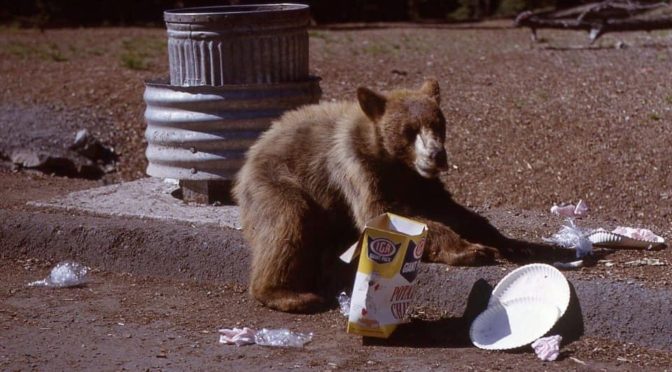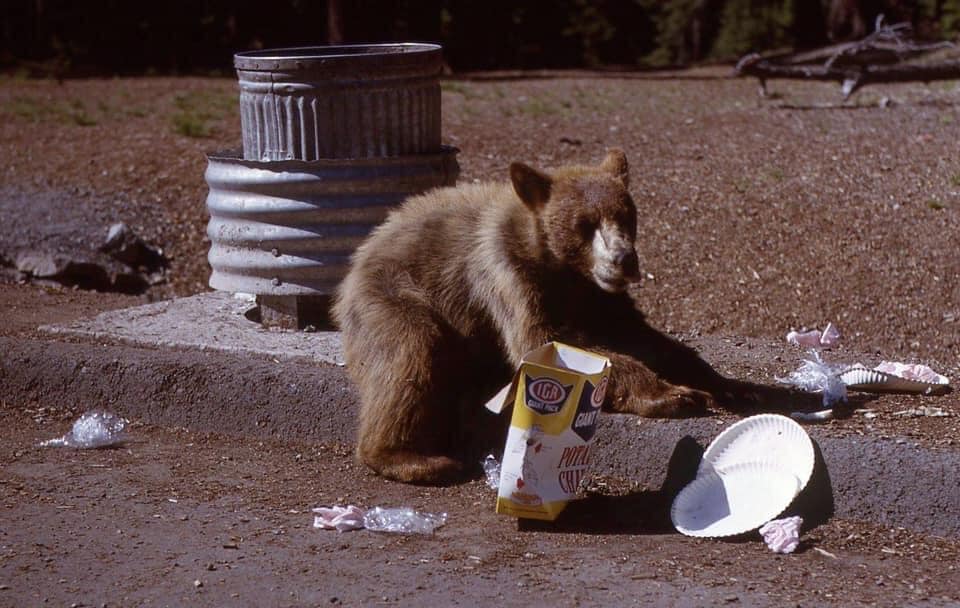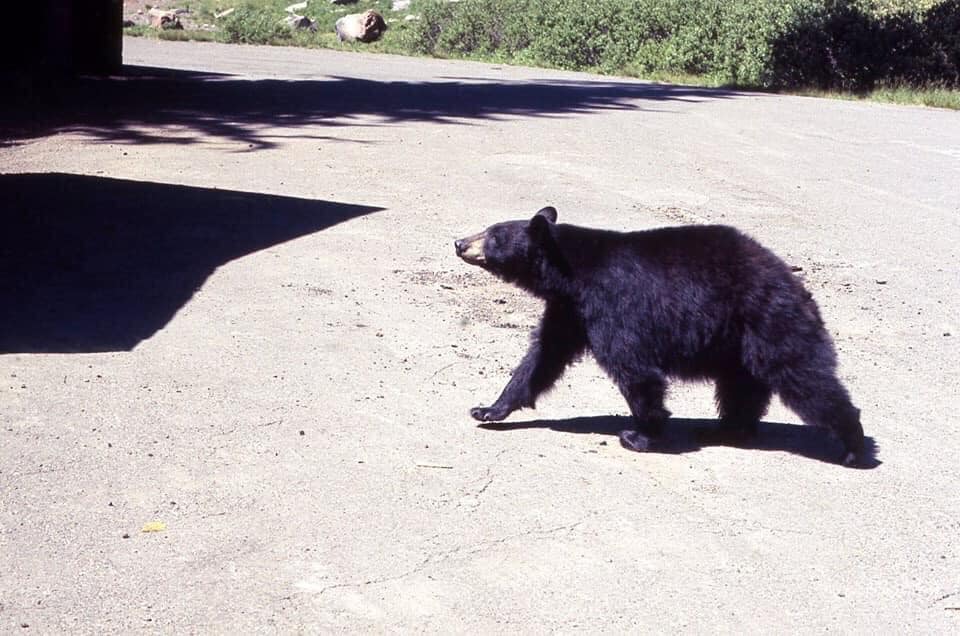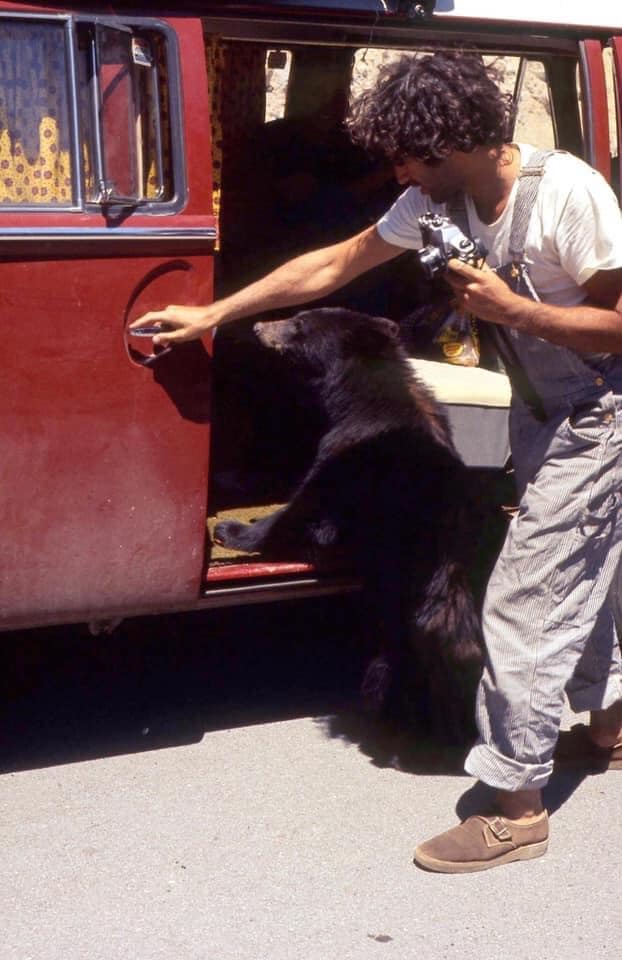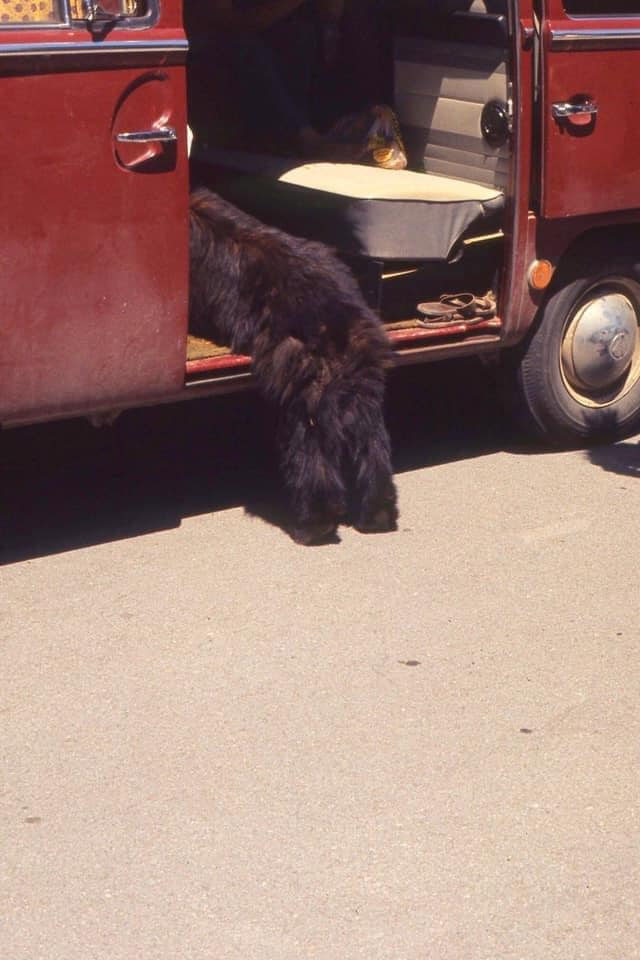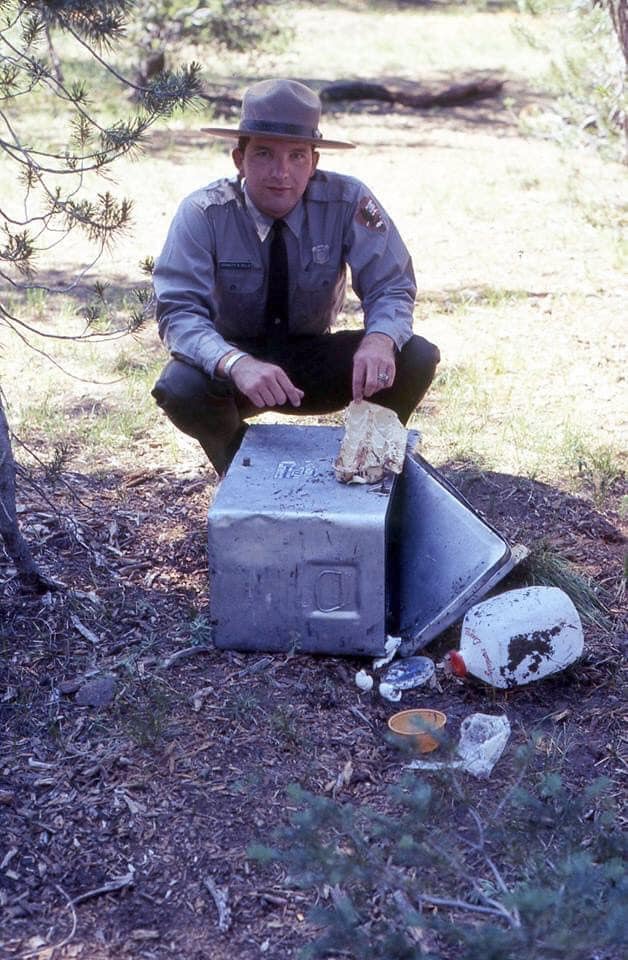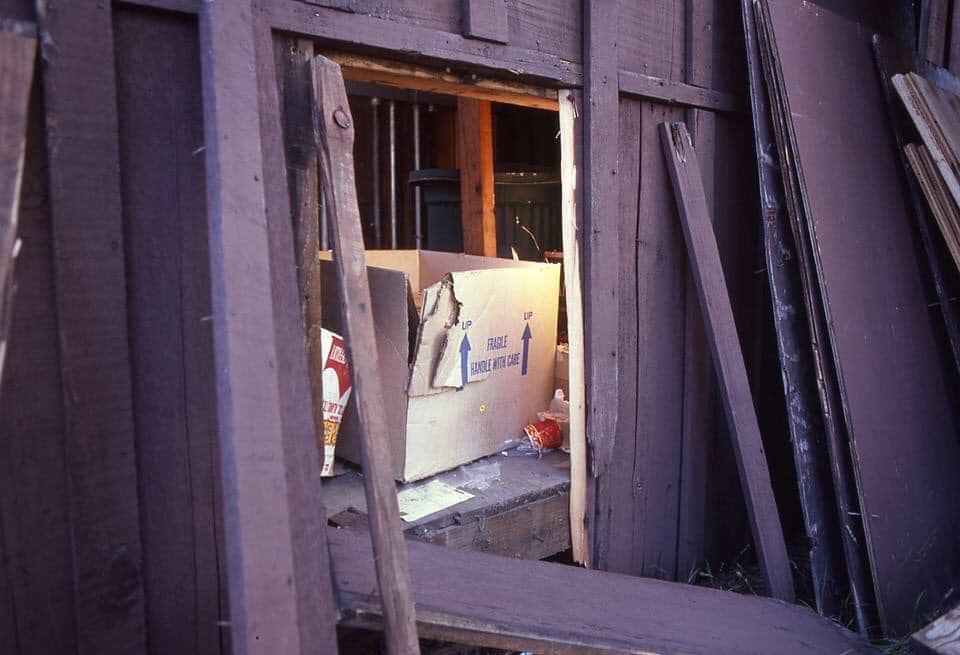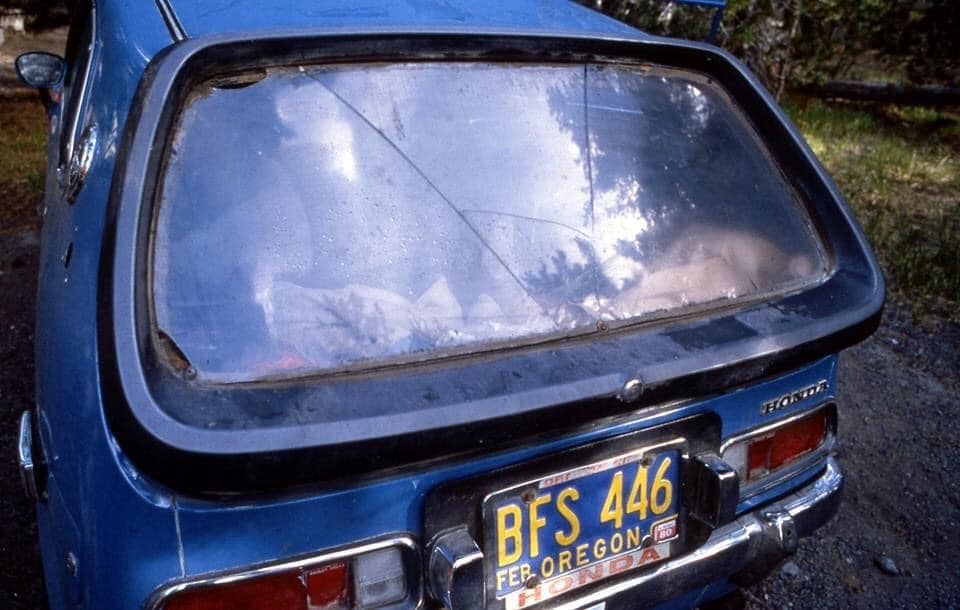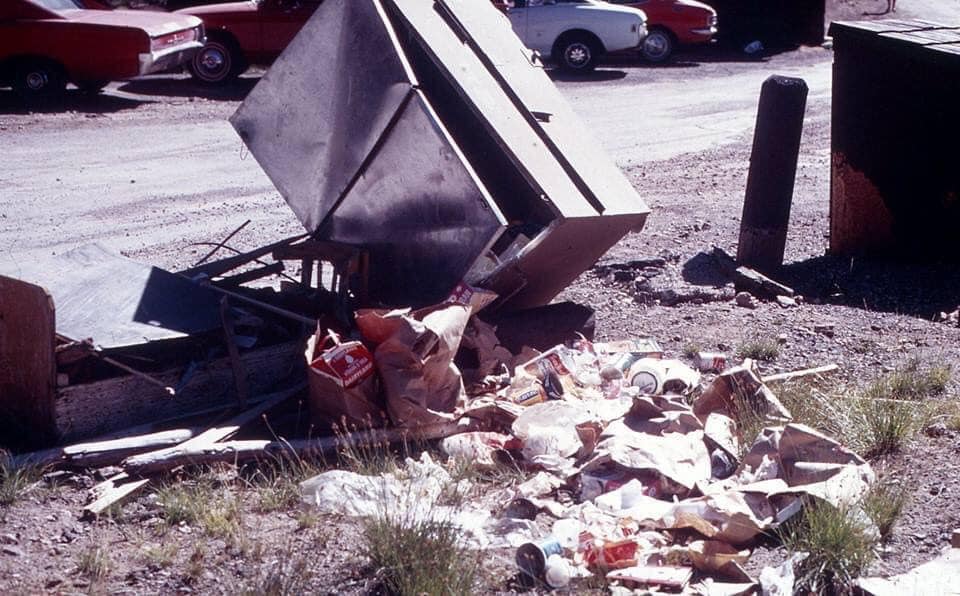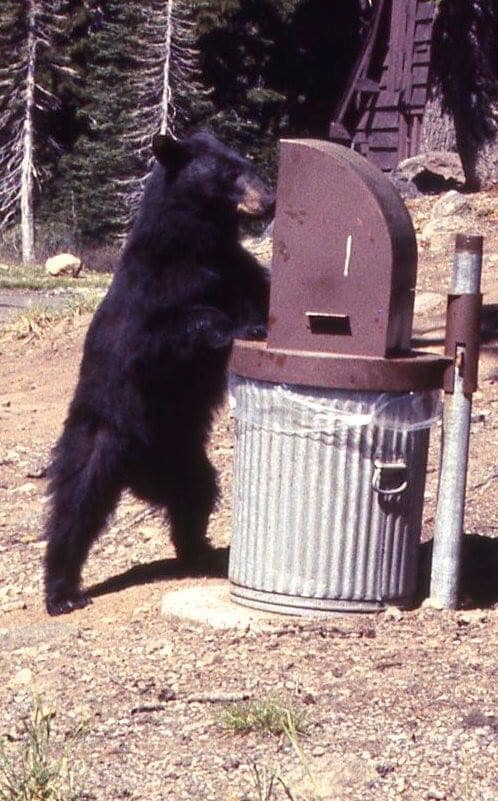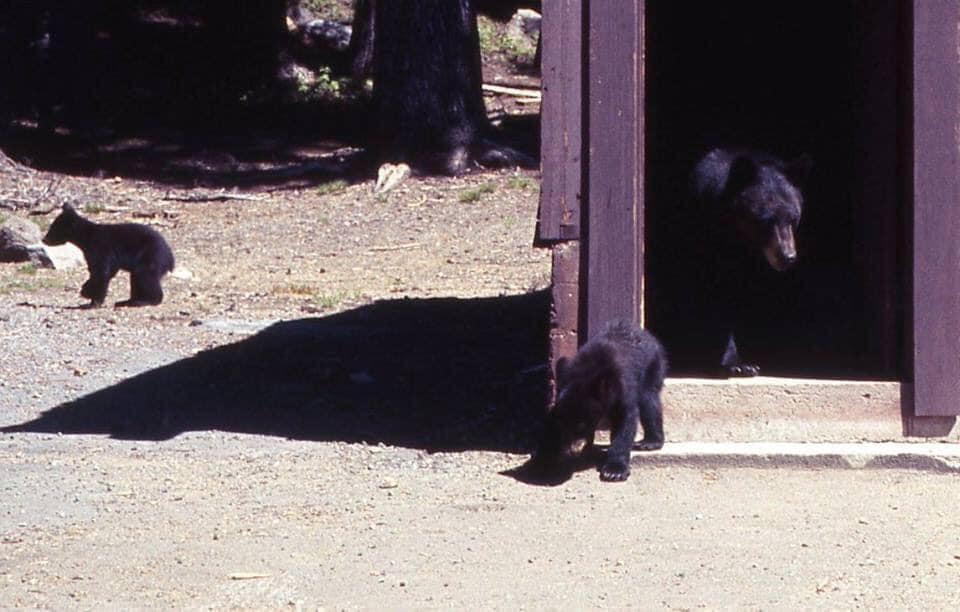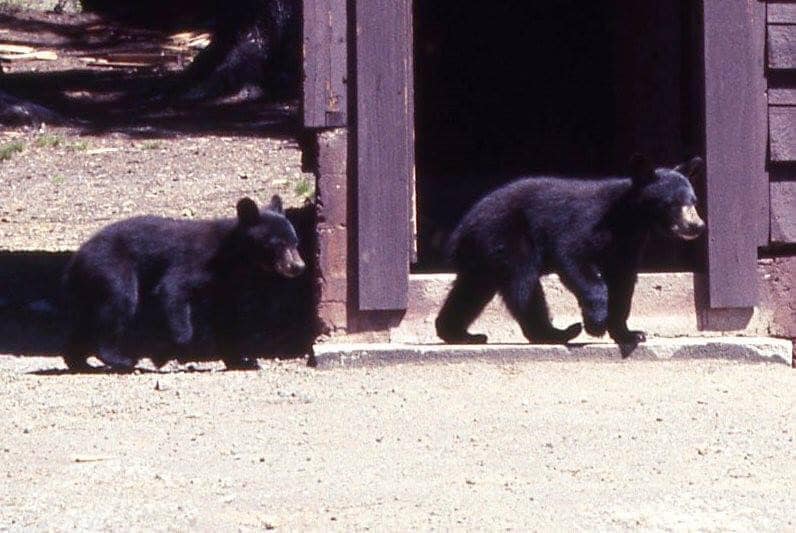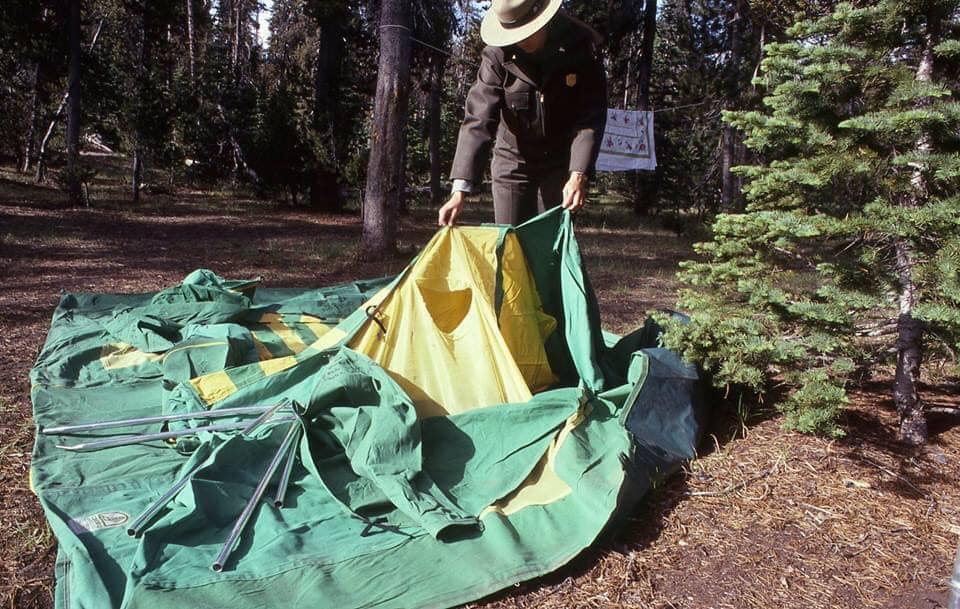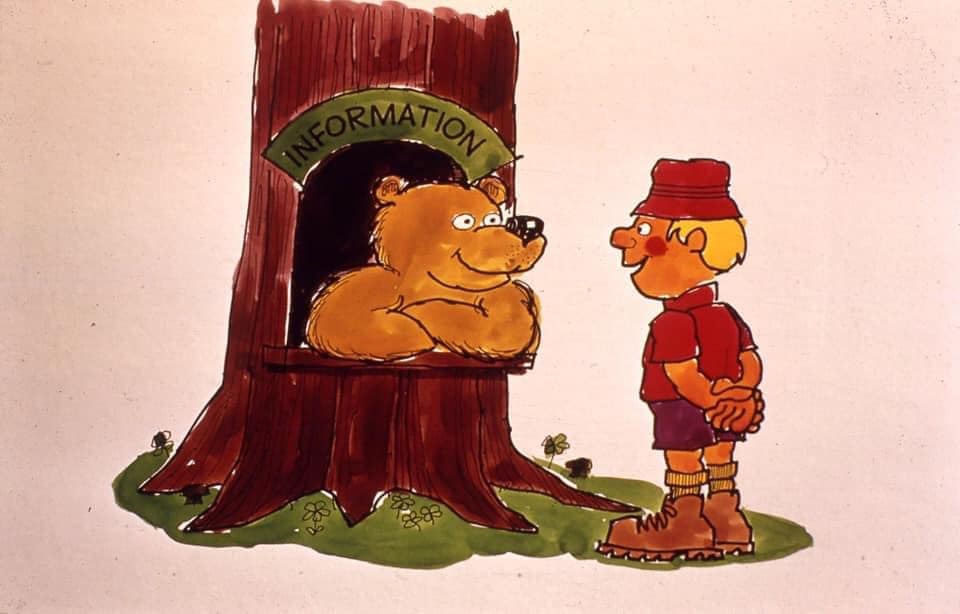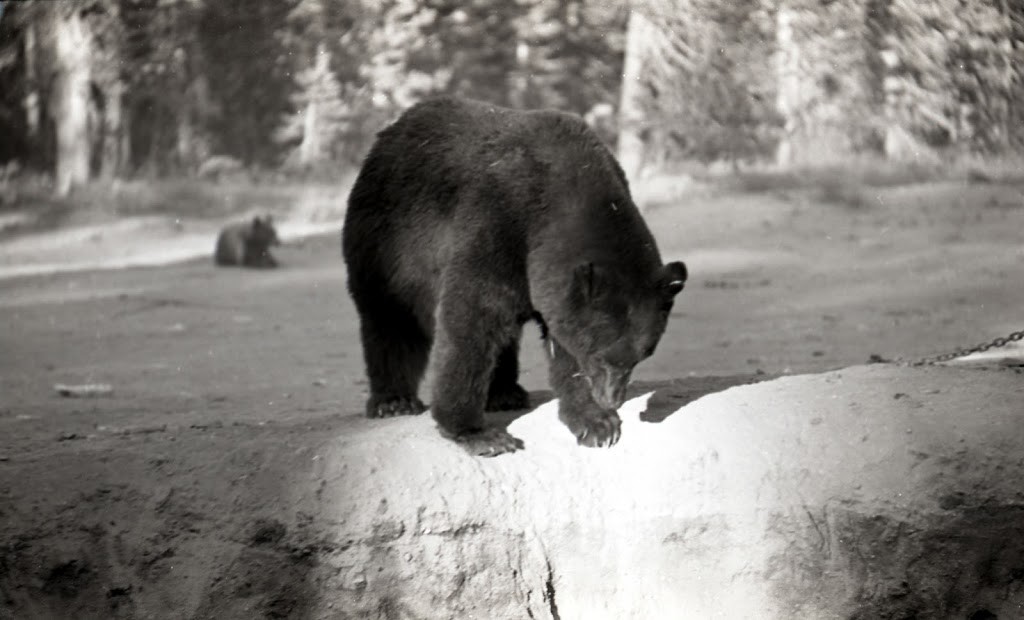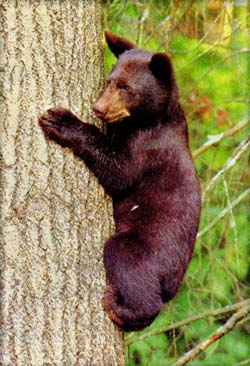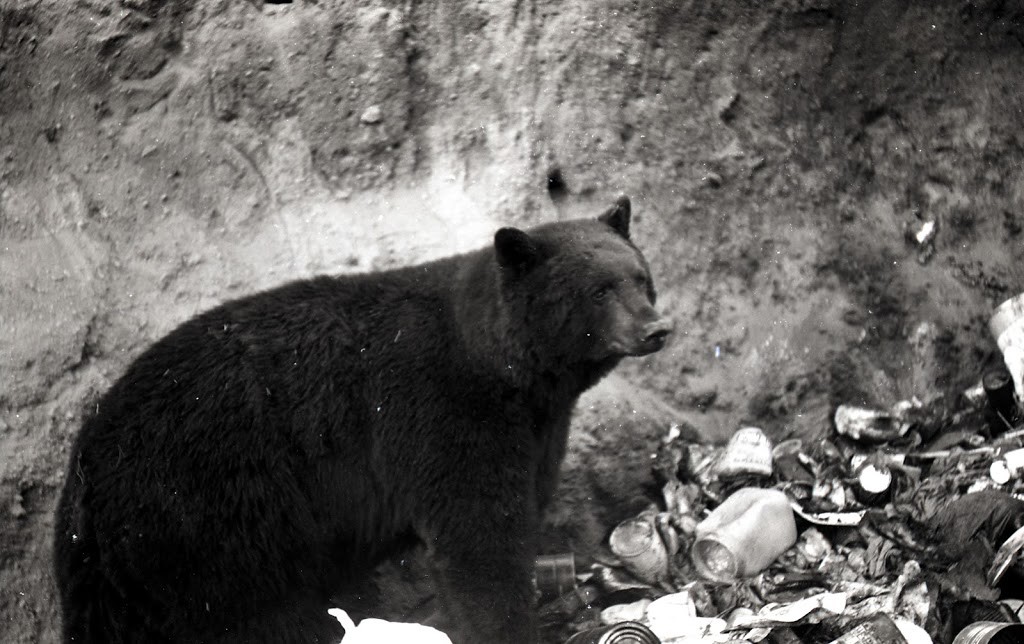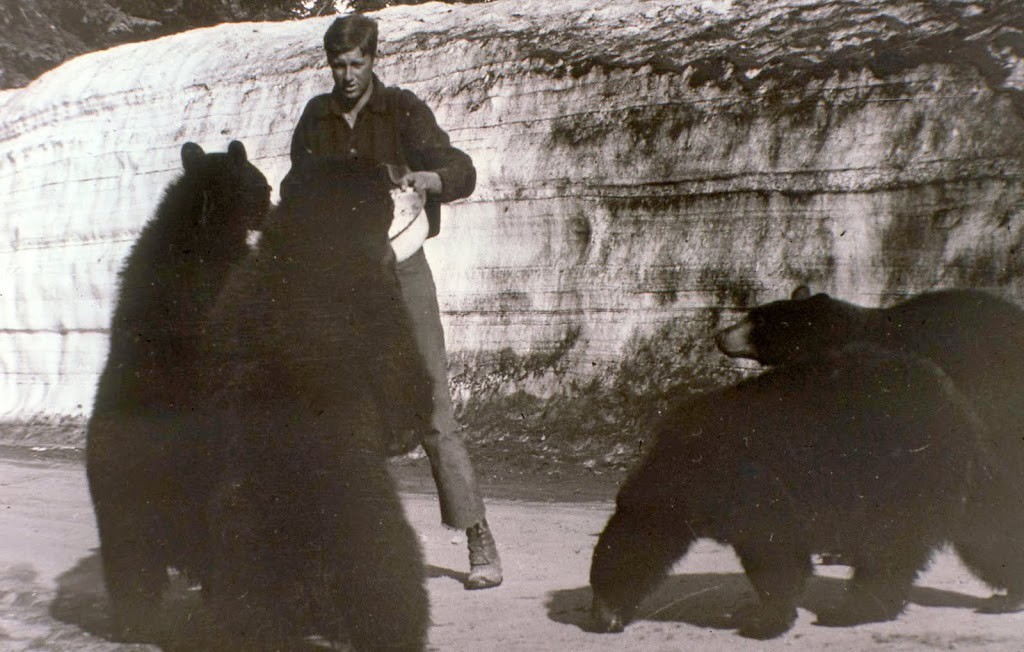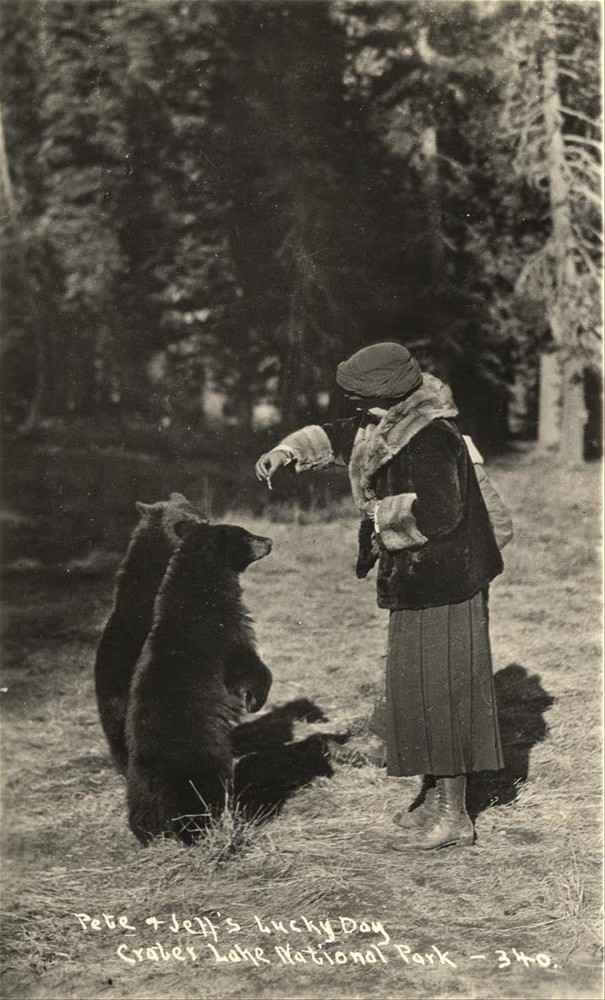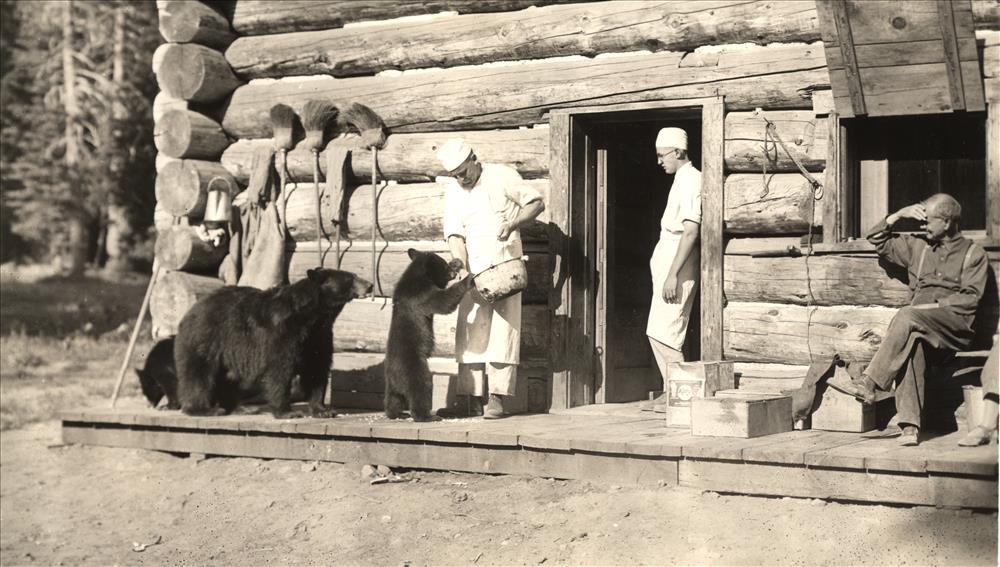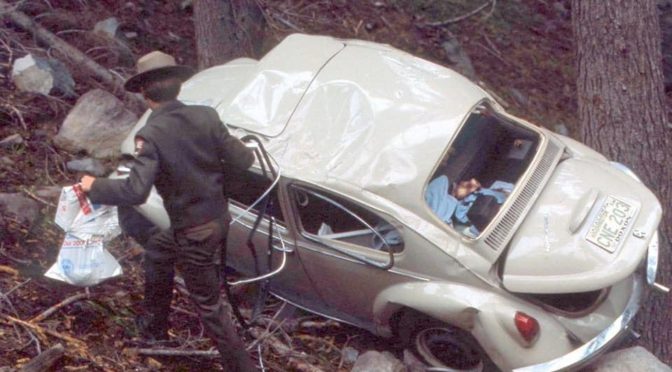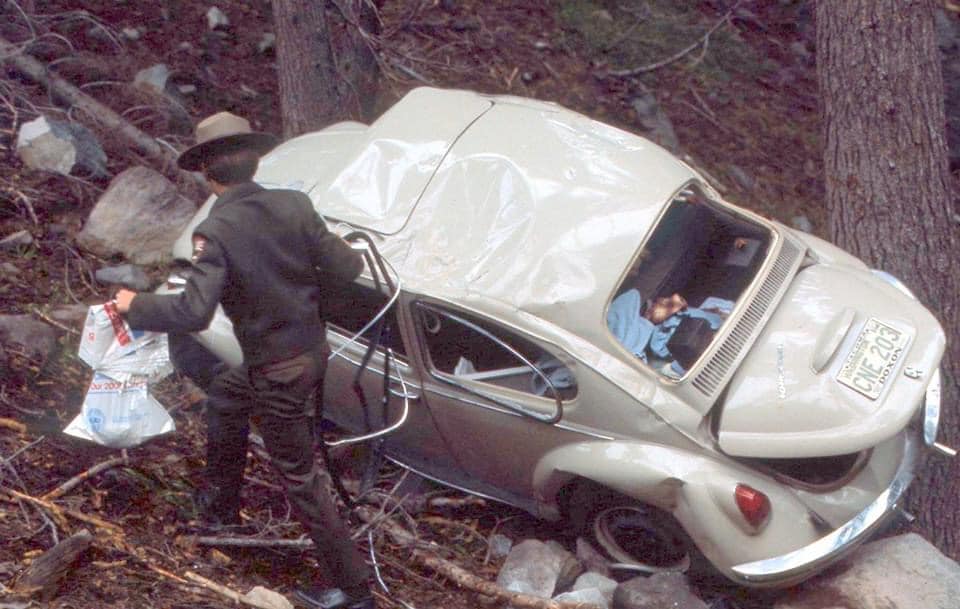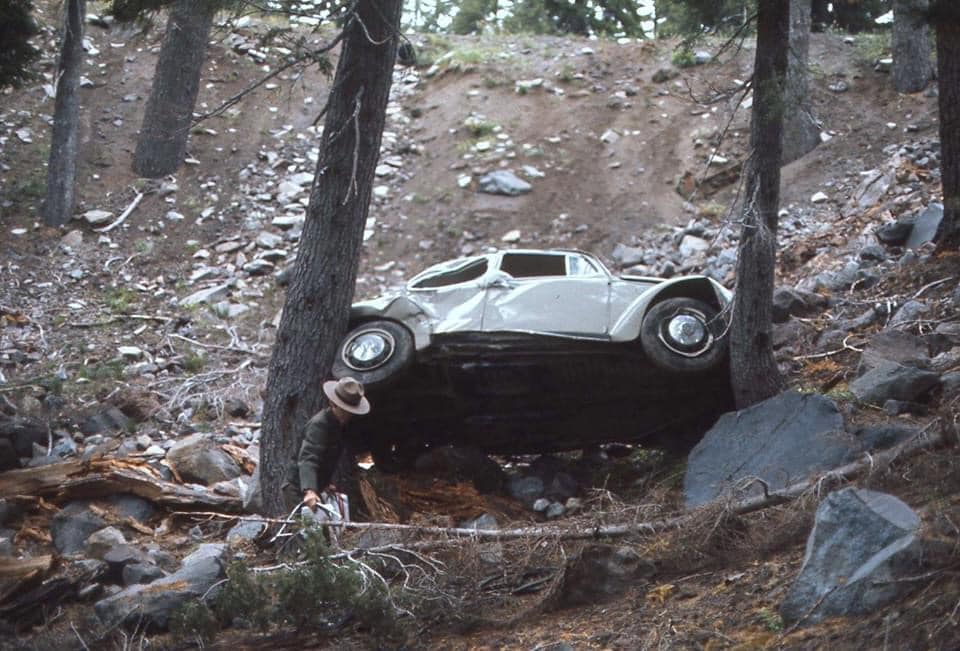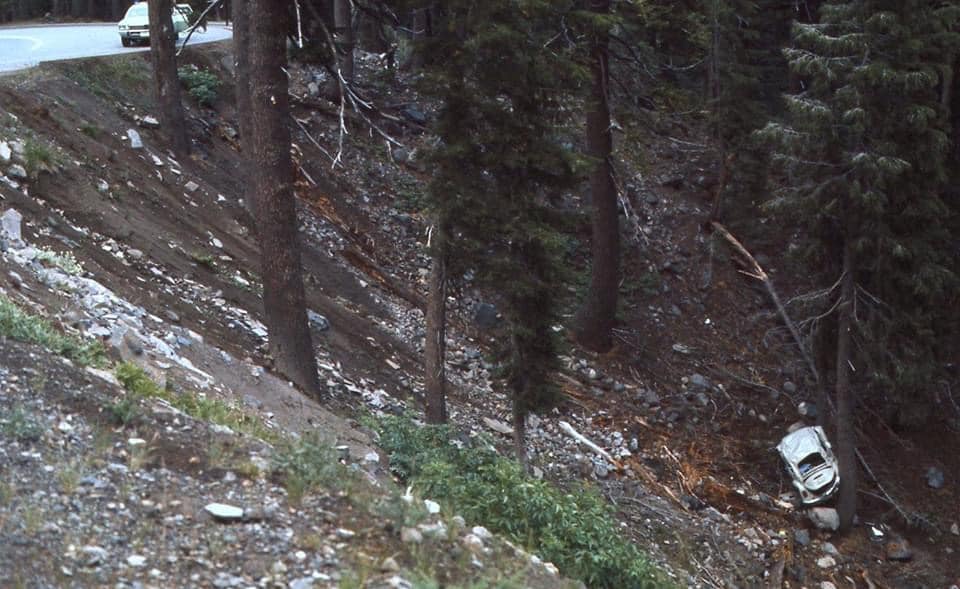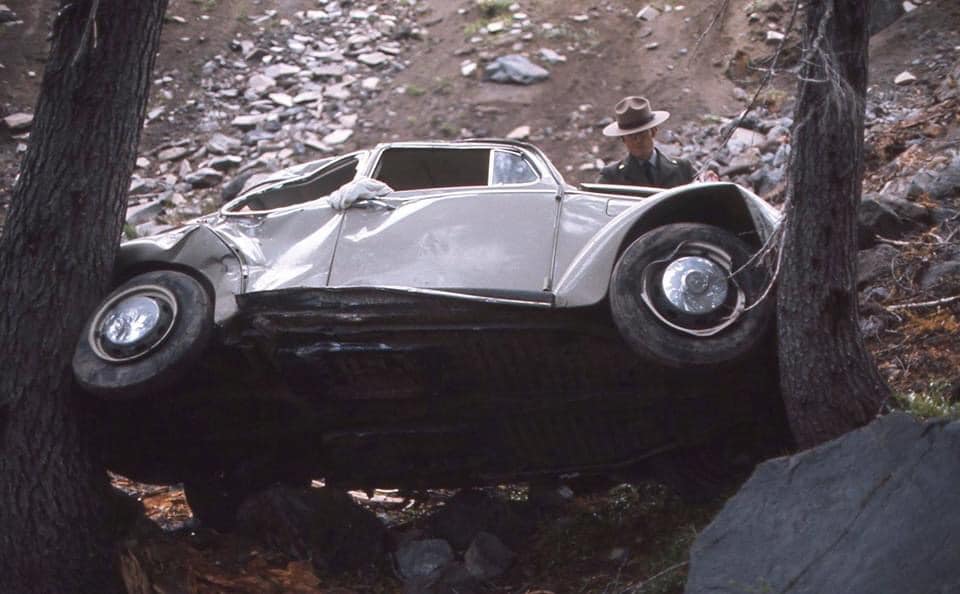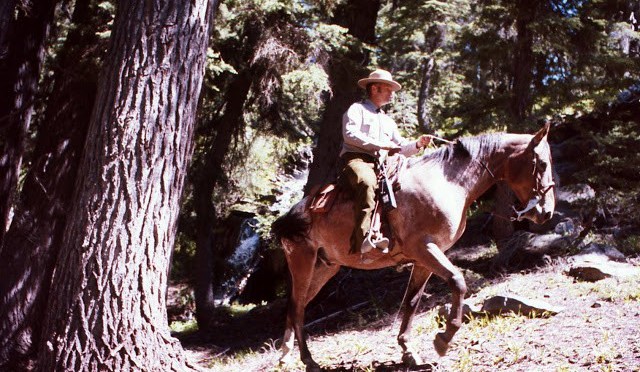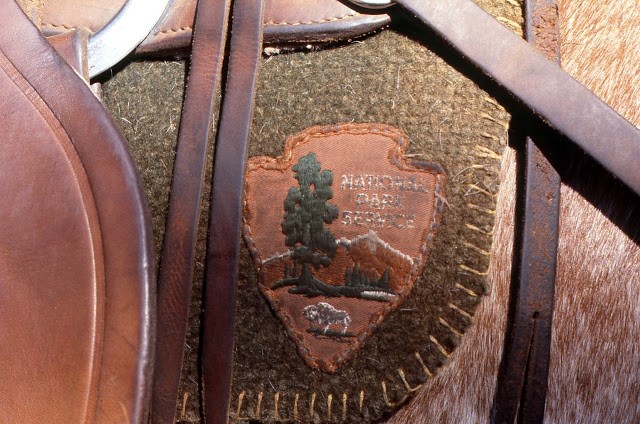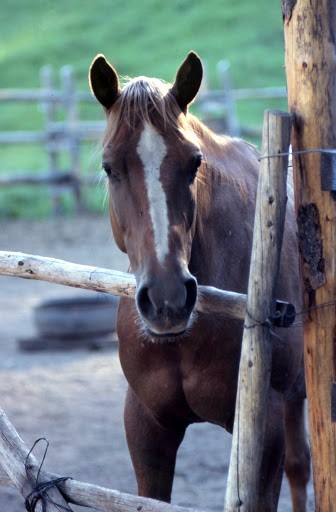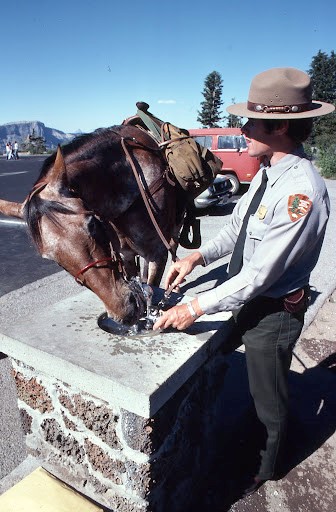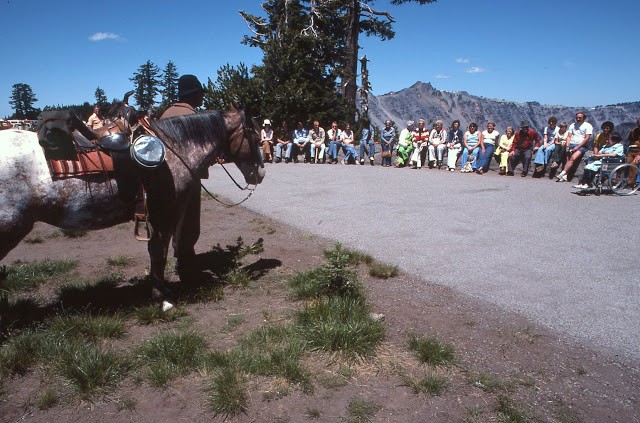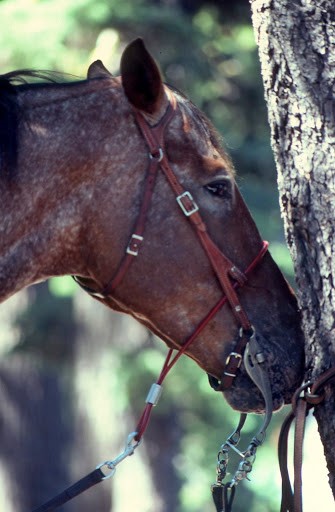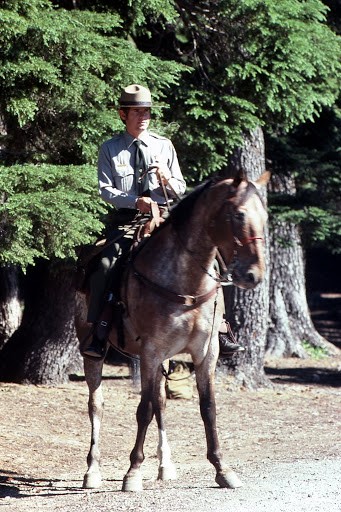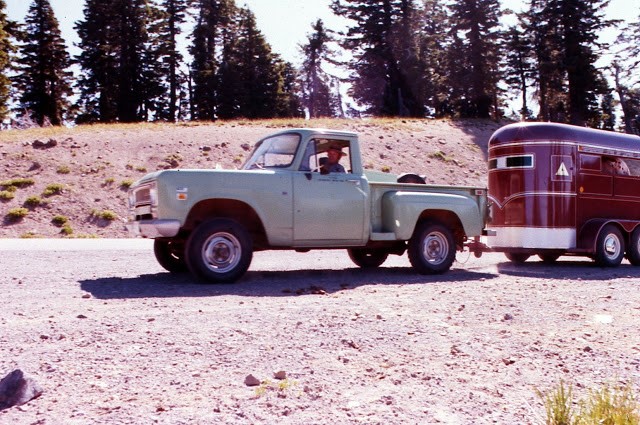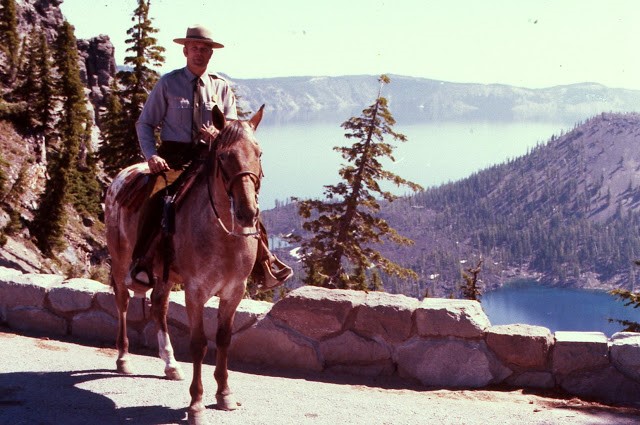Story submitted by Dan Mackay, 2025-3-17
Dan (left) and Larry Mackay feeding golden-mantled ground squirrels.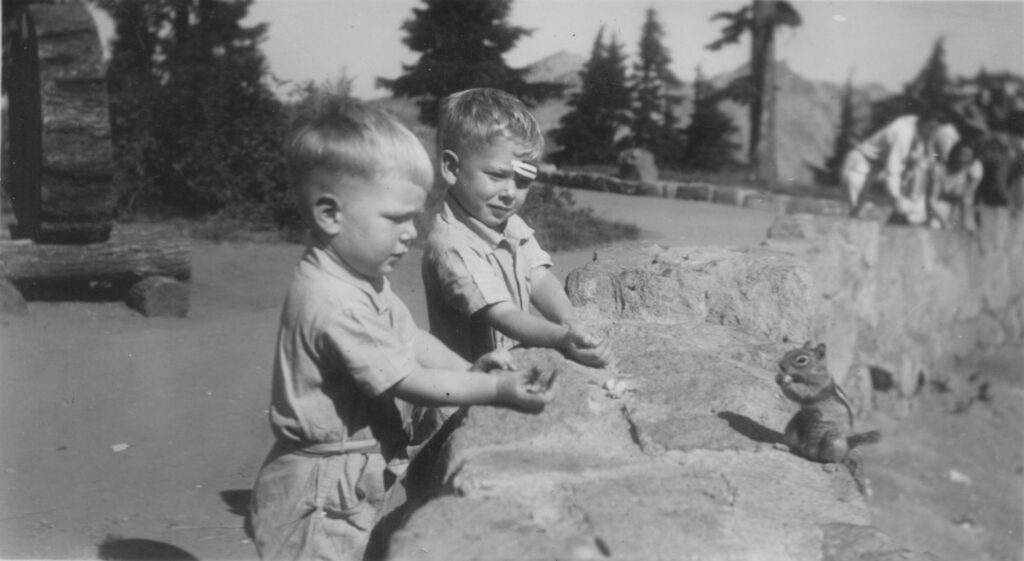
Crater Lake Rainbows
Crater Lake National Park has been a favorite place of mine since childhood. In the family album there are pictures of me at a about 2 years of age, feeding the ground squirrels on the rim near the lodge (in those days it was still politically OK. Now it is a $100 fine). My family came from Southern California to Ashland in 1940 and visiting relatives found excursions to Oregon a favorite vacation trip. Crater Lake was high on the list of places we would take them.
Our family made a winter trip there in 1949 to see the lake completely frozen over and with a couple of feet of snow on the surface as well. Something that hasn’t happened since.
Growing up in Ashland in the 1950’s I had always wanted to go fishing in Crater Lake. As a kid we camped and fished a lot. My father was a very good lake fisherman but only if he could drive to the lake. I only know of one lake he hiked in to and that was because the last half-mile of the road in to Four-Mile lake was still blocked by winter snow. They skidded his light weight boat in the last half-mile.
When about age 10 in 1949 I was ears to a discussion between dad and his good friend, Harold “Red” Thomas, the Ashland USFS District Ranger, regarding Crater Lake access. Some of dad’s friends thought it would be highly desirable for a tunnel to be bored through the rim of the lake just above the water level and a boat ramp constructed. Folks could then back their boat trailers through the opening and be free to fish the wonderful and unused waters. The flames fanning this discussion were kindled by non-other than the Assistant Park Superintendent Thomas Parker. In the pre-World War II days they were anxious to improve the tourist count.
This, from the files of the Crater Lake Institute, February 11, 1941:
“Assistant Superintendent, Thomas Parker, in a memorandum to Park Superintendent Leavitt, writes that “no national park can hope to come into its own if operated only on a short seasonal basis….A safe and comfortable means of reaching the lake shore should be provided…I do believe that hiking, horseback riding, boating, fishing, campfires…are all compatible with each other. With this thought in mind, I see the urgent need for a tunnel, or elevator, to the lake shore, and the development of a fine winter sports area, and program…if a tunnel for vehicles was constructed from near headquarters, the entrance portal would be close to the (new) campground, with adequate space for parking of cars…When one reaches the park…and is given the choice of a bleak, cold windy camp ground, or a drafty room in a ramshackle lodge at prices that would put the blush of shame on the operator of a clip joint,…we cannot expect them to tarry long in our midst or praise us for our thoughtfulness towards our guests.”
What we were witnessing here was the evolving NPS internal struggle between the “utilitarian conservation” and the “preservation” forces.
I don’t recall Harold’s comments but dad came away convinced that it ought to be done. And that would have been the only way we would have fished it.
Fast forward to the summer of 1958. I came home on leave from the Navy. Having been away for over a year I was anxious to do some fishing and trade the grungy southern California air in my lungs for some pure high Cascades variety.
I had learned that one could rent a ten-foot long rowboat at the foot of the trail to the lake. At that time the only trail to the water was located just below Crater Lake Lodge. Being young and in good shape I didn’t mind the hike.
I called up a high school friend I had dated off and on, Francine Robertson, and she was home and up for the trip. I talked my dad out of his second car for the day and found my old stash of spinning gear.
Francine’s dad was a transplanted Texan and quite skeptical that this sailor wanted to just take his only daughter fishing. He was a wonderful man who taught Physical Education in the Ashland schools and also loved to fish. But he really didn’t trust me. He was well versed about young bucks my age. However, he allowed as how Francine could go. She was after all a Senior in high school. But he had to know what time I would have her back. I might have said “by dark”.
We had an early start and it was a pretty mid-July morning when we arrived at the lodge. There had been a brief shower the previous evening and the sun reflected off droplets hanging on the fir trees. The air was cool but there was promise that it would warm nicely as the day progressed. There were still plenty of snow drifts along the shore and under the trees but the ground was mostly bare.
We made our arrangements for a boat at the lodge, ten dollars for the day, grabbed my old scout backpack with the fishing gear, lunch and windbreakers, then started down the trail. It was steep, rock strewn and dusty. Word was that it was hard to maintain and no doubt figured in to it’s relocation in 1960 to Cleetwood Cove. On arriving at the shore we had our choice of about four boats. All older grey painted flat bottom wood with shallow draft. They had to be bailed out from yesterday’s rain and were just pulled up on a narrow beach. No one was in attendance. No one else was there
A very old ten foot wood row boat on Crater Lake is a small boat on a very big pond. With two people aboard the normally low gunwales only sported about six inches of freeboard. Having one out in rough water could be dicey. We were provided WWII vintage Kapok life vests, which made OK seat cushions but they were damp and not something we were ready to slip in to short of a pending dunking. The oars were suitable but free in the locks and took a bit of practice to make steady headway, even for a sailor. Fortunately, the water was calm, being barely rippled by the summer breeze. The lake surface, being on average a thousand foot below the rim of the caldera, gets some protection from stronger winds….usually. There are stories of people caught out on the lake in sudden thunderstorms that created seven foot white caps.
The first close impression of the water came as we hiked down the trail. Looking below us in to deeper water it was incredibly blue, bluer than Francine’s eyes almost.
Rigging the spinning rods with red, white and silver weighted wobblers on the end of 4 pound test monofilament line, we rowed along the shore in the direction of Wizard Island tossing and retrieving the lures. Francine was not practiced in this art but quickly caught on and was soon rewarded with a heavy strike from a fat 18” Rainbow Trout. I had been watching her cast and saw the fast moving dark shadow streak after the splash as the lure hit the water near the shore. The initial disturbance of the water by the lure had not subsided when the trout exploded through the surface and danced about ten feet along the surface on it’s tail trying to shake free.
Because we were in very deep water it was easy to let the fish have line and gradually work it up to the boat. After a couple of aerial displays the fish sounded and we could see it fighting clearly fifty feet below. In a few minutes she had worked it up near the surface when I realized one small item I had neglected to bring was a net! No matter. She played the fish out and when it was along side we carefully balanced the boat so I could reach over with two hands and sweep it over the gunwale, letting it flop wildly in the bottom of the boat. This fish had spunk to spare and in reaching over the side I realized it had grown up in very cold, and very clear, water.
That fish now on the stringer, which I did remember to bring, was our first score. At least we weren’t going to be skunked.
We rowed along the shore another 100 yards or so and I spotted a fish’s shadow moving along the bank about 75 feet away. Reaching way back I hefted my Daredevil on a long arc, dropping it about 10 feet ahead of the shadow. Again there was the instant strike as the 17” Rainbow hit and then made for deep water. While I was giving some line, the fish suddenly charged back to the surface slacking the line and threatened to toss the lure back at me. Getting control again and lightening the drag, I gave it room to run and played it slowly up to the boat. During the entire time every move the fish made was easily observed, which added immensely to the fun.
This time it was Francine’s turn to get the fish aboard which she did, repeating the “two hand heave” technique flawlessly.
Since the day was still young, and so were we, it was decided to row out to Wizard Island to see what it had to offer. I was attracted to the relatively shallow water on the west side and was pleased to see the shadows of Trout working the mossy edges of the smaller islands. Here we could easily see the rocky bottom but it was as though we were floating on a pane of glass. The depth of the water under us was difficult to gauge.
We repeated the exercise with the fish six more times and didn’t lose a single one. I had five and Francine three very fine Rainbows, all between 17 and 21 inches, each one full of fight and in beautiful shape. These were the progeny of fish last stocked about 1940. Apparently, there was sufficient food in the lake to keep them in good shape. None of our catch had big heads and skinny bodies.
We thoroughly enjoyed the solitude of the lake with only the sound of the squeaking oarlocks and the Clark’s Nutcrackers breaking the silence. Once in a while a tourist voice would drift down but there were no other boaters the entire day.
We had about all the fish we deserved, her three and my five, and now spent some time exploring and having lunch. Finding a level place on Wizard Island to spread a picnic is nigh on impossible. It is nearly a solid boulder field near the water’s edge. The Golden Mantle squirrels and Clark’s Nutcrackers were intent on mooching any lunch we might consider extra or momentarily turned our backs on. I always wondered how the squirrels got on the island. Perhaps they came on winter snow bridges from the shore.
A bit later we were floating about one hundred feet off the end of the island dock where the launch boats were kept. The sun was hot and there was very little breeze. I had taken off my shirt and was only in my hiking shorts and tennis shoes. The water felt a nice temperature when I held my hand in it over the side of the boat. I thought it would be cooling to slip off the stern of the boat and swim over to the dock.
What I didn’t realize until too late was that the warm water was only about a six inches deep layer sitting on 1,900 feet of water not exceeding forty five degrees. Cooling wasn’t the word for it. My breath was sucked away and I made my fastest crawl stroke ever to the end of the dock. Hypothermia could not have been far away. I never came as close to walking on water before or since.
The shadows lengthened and we needed to be back to the landing by 4 P.M. according to the boat rental rules. Dragging our hefty catch on a stringer at the back of the boat we headed in. At the beach there was a convenient snow bank and we packed our fish in snow in the backpack and began the hike out. It was not an altogether comfortable trip as it was quite warm. I was hot and sweating but had ice water running down my back and legs from the melting snow seeping through the old pack.
The hike out took longer than the hike down and what with getting the car loaded, the fish cleaned and some supper we were way after dark getting back to Francine’s home in Ashland. Before going in the house we put the fish back on the stringer. We opened the door and she walked in holding one end of the stringer while I brought up the rear. Her quite perturbed Texan dad’s eyes fairly popped. “By Golly you really did go fishing!” he said. I think I could have taken Francine out anywhere after that. But her dad made me promise that if I took her fishing again he would get to go along.
The hole through the rim never was built and the rowboats went away in 1975. We were to get one more trip in 1959 but did not realize then that it soon could never be repeated. The launch rides of today are a bland experience compared with being in the solitude on the water in yesteryear’s ten-foot rowboats. Bank fishing, even off Wizard Island, cannot hold a candle to the experience of doing it from a small boat.
Francine, (of the incredible Crater Lake blue eyes), and I would have life conspire against us developing a relationship. But we remained good friends for many years.
The National Park Service in their “preservation” wisdom has worked hard to keep the lake as pristine as possible. There must have been some interesting discussions between Thomas Parker and his boss. The NPS now worries more about the public loving the park to death than attracting more visitors. I know today, they wish the fish would disappear and I can fairly see them blanch at the prospect of boring a hole through the rim.
The “preservationist” group prevailed in the management of the parks. One wonders if the future experience will be relegated to a complete “look but don’t touch” approach. Perhaps it is all for the best and perhaps it is better to not try to repeat some of life’s great experiences. This certainly was one for me. And try as I might over the years getting back to mountain top experiences has usually left me somewhere on the lower slopes.
But maybe there is a way to satisfy some of the “utilitarian conservation” advocates?
Fast forward again to the Spring of 2015 and our trip to the Vermillion Cliffs National Monument in Utah. Some will recognize that area as the wilderness where the beautiful “Wave” sandstone formations are. In order to maintain the wilderness experience the Bureau of Land Management restricts visitors by means of a lottery system for permits to go in to the area. There are only 20 permits each day which, given the popularity of the site, are highly coveted. Ten are selected in advance on line and ten are selected daily from those gathered at the nearby BLM Visitor Center in Kanab, UT (We tried the local lottery for two days mid-week in early March and had to compete with 120 other hopefuls. The odds were against us and we were not successful).
However, it occurred to me that Crater Lake might use a similar system providing, say ten small rowboats per day to such a scheme. From my earlier experience they are barely visible to visitors on the rim and would at least allow a few people each season to have a rare experience. Today boats can be outfitted with GPS trackers and radios which would help greatly with administration.
To protect the lake so all one can ever do is look at it seems a shame. I can’t say I agree with the plan to bore a hole in the wall. But I believe there can be a better balance.
Dan Mackay
Notes and pictures
As I recall neither of us had a camera on this outing. Mine was a clunky old Brownie Reflex which would have been excess baggage. So I have hunted for similar pictures from other sources to flesh out the story.
This is off a postcard with an estimated date of 1910-1930’s. This boat is about a 12-14 foot and the ones we used were only 10 feet long. This boat is equipped with two sets of oars while the 10’s only had a single set. Still, it gives the flavor of the experience and was likely taken near the shore beneath the lodge.
Below are two old photos, again likely from the 1930’s, of the boat landing below the lodge. In the bottom photo the small boats furthest up the shore were likely the same available to us on our outing.
Below is a picture of the Wall Trail about 1945, the same year of the following one. It took nearly constant maintenance to keep it open.
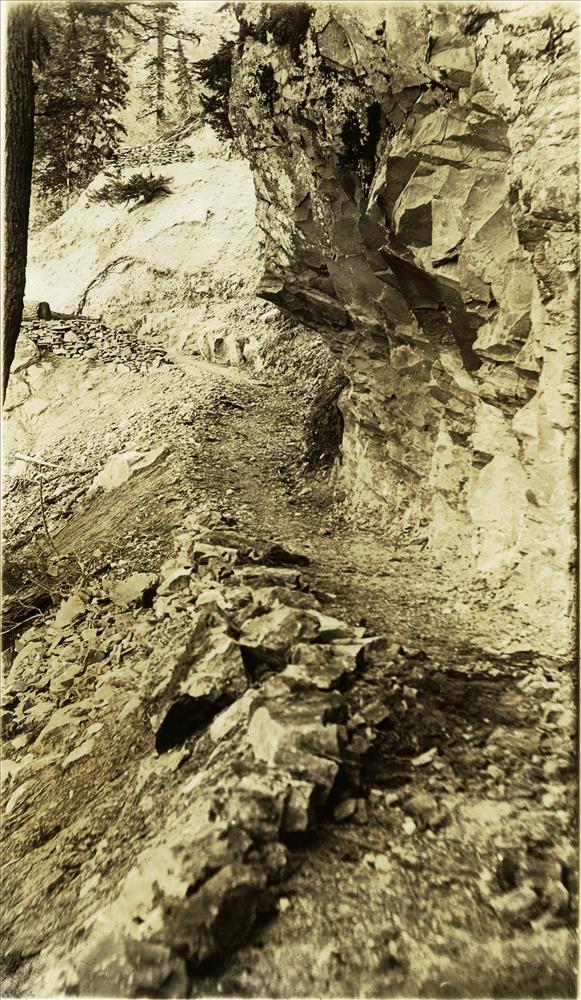
Old photos courtesy of the Crater Lake Institute
Digging out the Wall Trail from the Lodge to the lake. The trail was on a north facing slope and the accumulated snow did not get enough sun on it to melt until late in the season. The trail was also rough and beset with rockfalls. When the present Cleetwood Cove trail was built about 1959 it was located on a south facing slope and was built to accommodate small powered tractors for hauling materials in and out.
Following is additional information on park superintendent Leavitt.
Ernest P. Leavitt
From August 1, 1937 to March 14, 1952, Ernest P. Leavitt served as park superintendent, the longest tenure of any person in that position. Born in San Francisco, California, in 1885 he worked for the Southern Pacific Railroad from 1907 to 1910. In the latter year he began his Park Service career as a clerk at Yosemite National Park, later becoming an administrative assistant to the superintendent and ultimately assistant superintendent from 1918 to 1930.
Thereafter, he served in successive superintendencies at Hawaii Volcanoes National Park (1931-33), Mesa Verde National Park (1933-35), and Lassen Volcanic National Park (1935-37). While at Lassen a gas explosion destroyed the superintendent’s residence, severely injuring Leavitt and killing his wife. After his recovery Leavitt was transferred to Crater Lake. He retired from the Park Service in 1952 and Leavitt lived in the Medford area until his death in 1961. [Administrative History of Crater Lake NP]
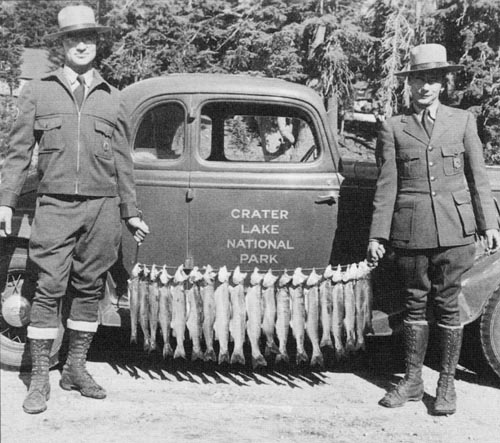
| 1940, Superintendent Ernest P. Leavitt (left) and Chief Ranger Carlisle Crouch (right) pose with fish caught in Crater Lake. Photo courtesy National Park Service. |
Another boat landing picture:
Revised 3/2025
Dan Mackay
Ashland OR 97520
danmk@charter.net
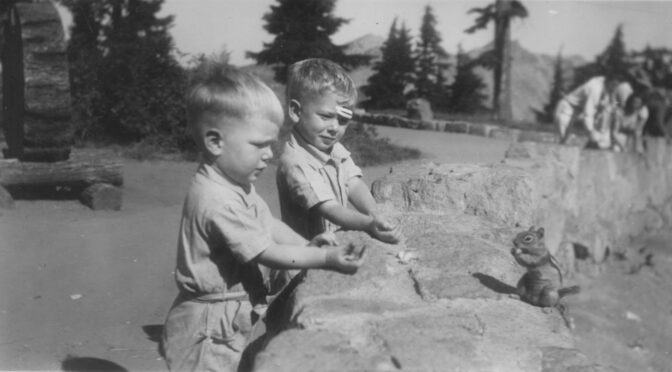
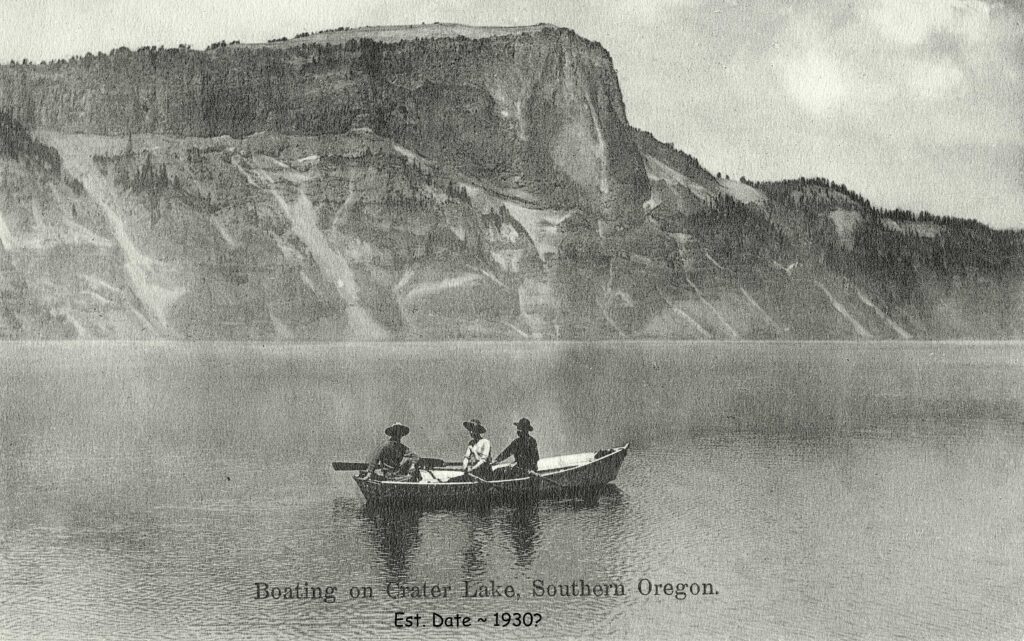
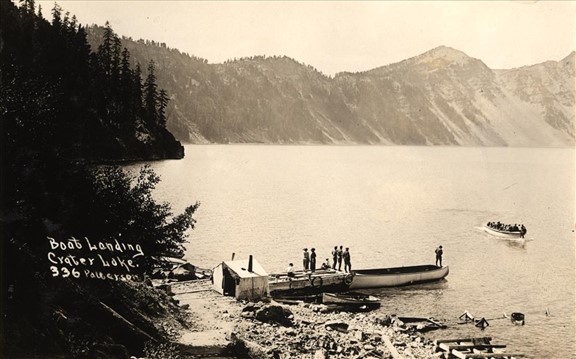
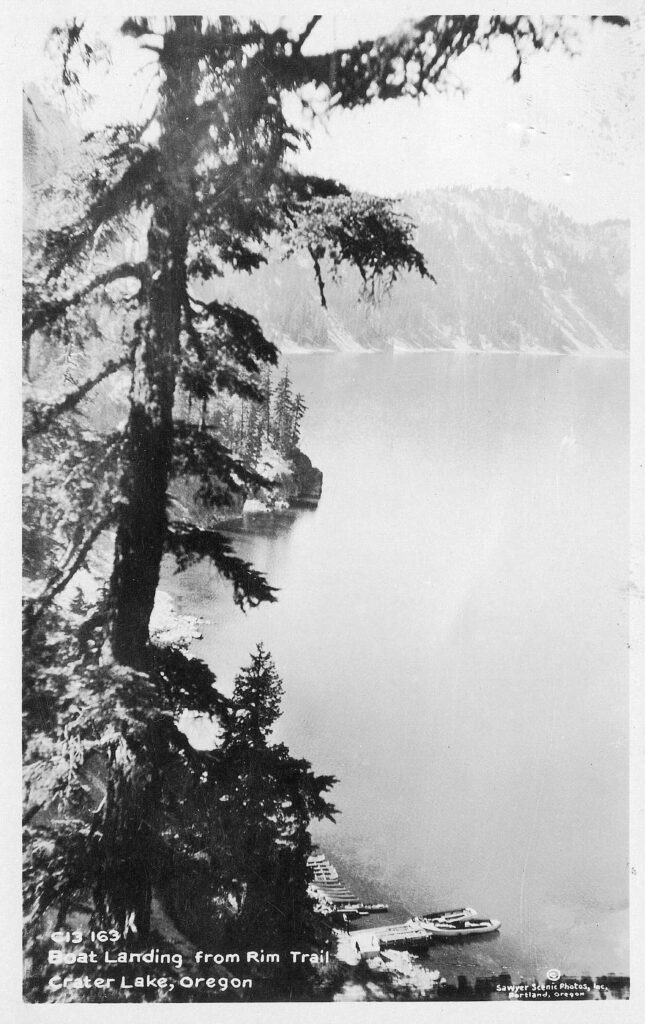
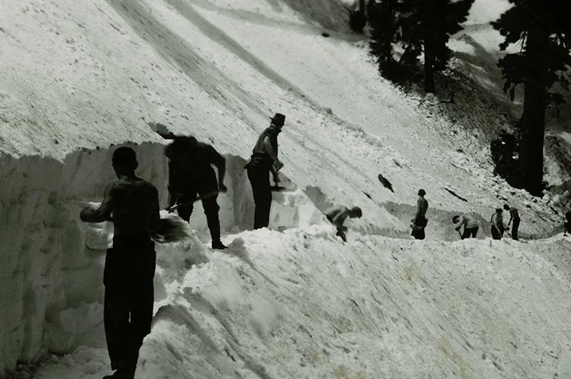

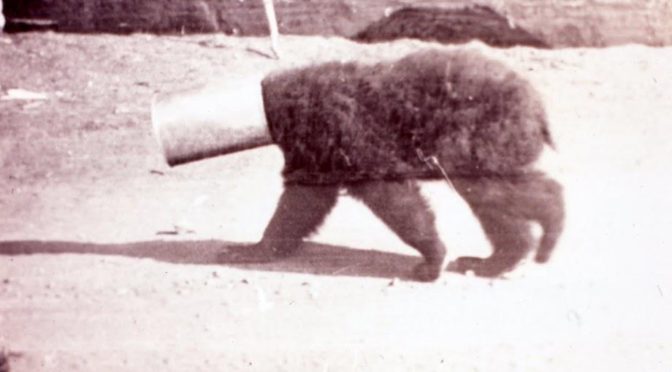
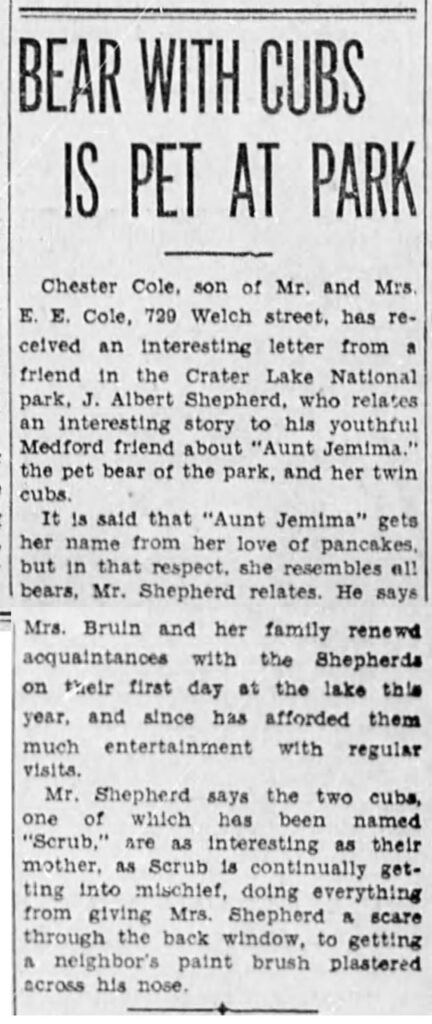
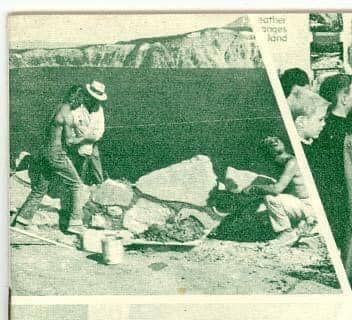

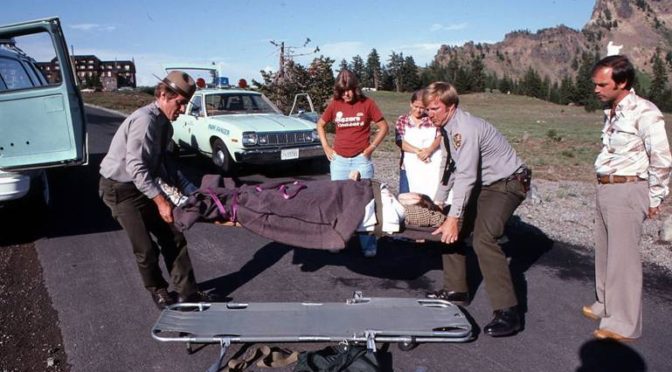


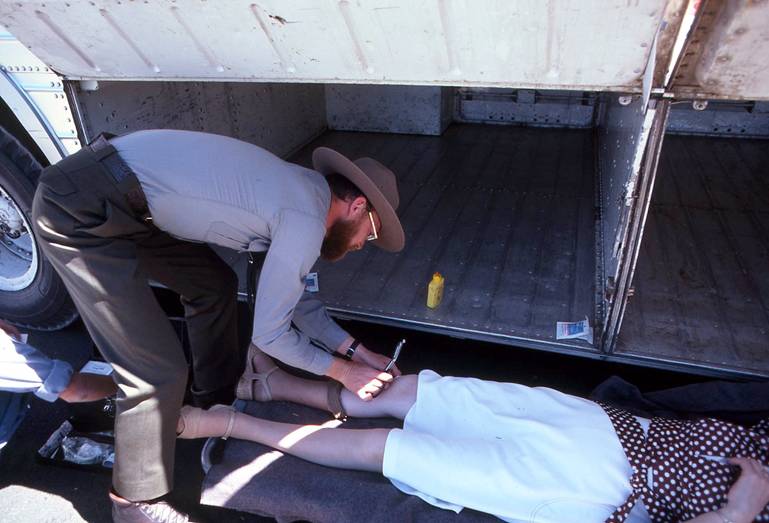
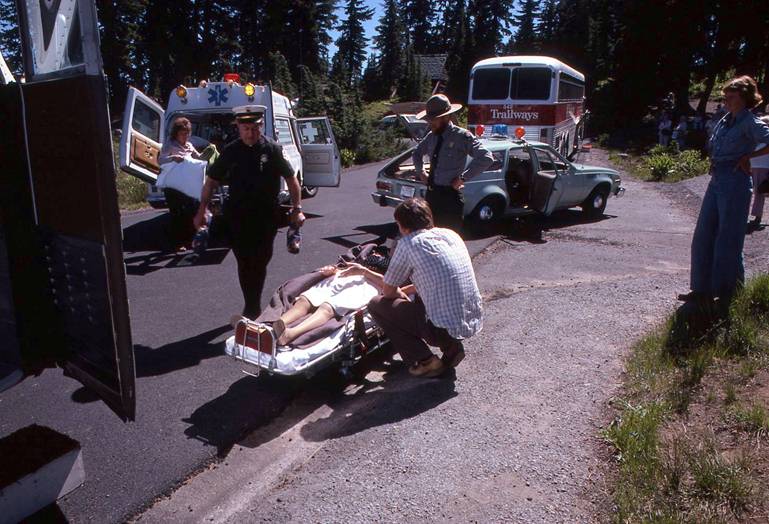
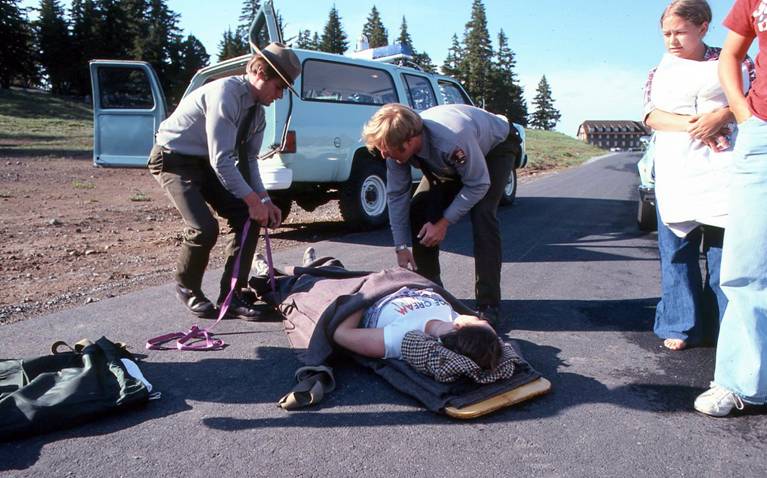
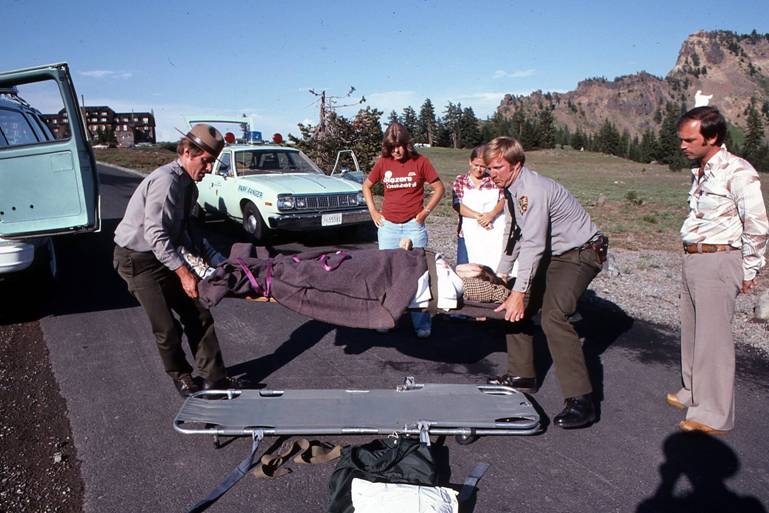
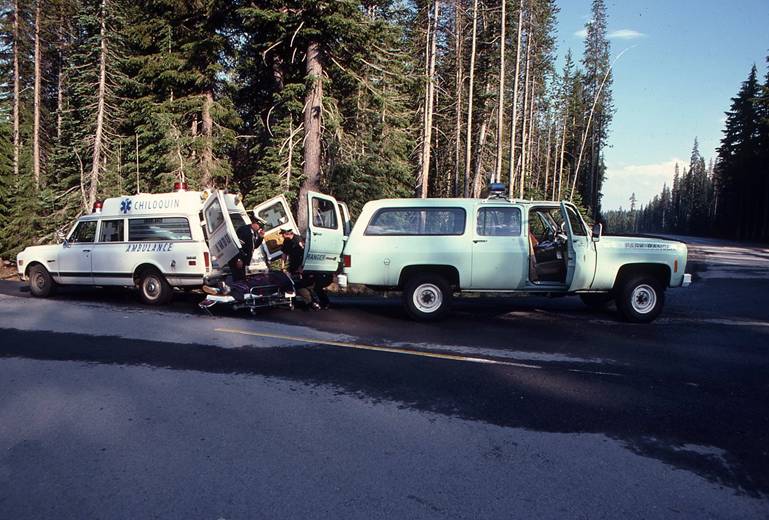
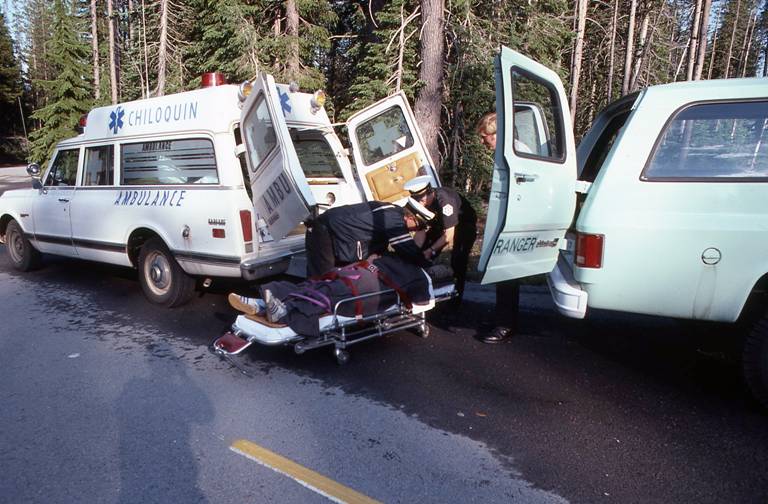
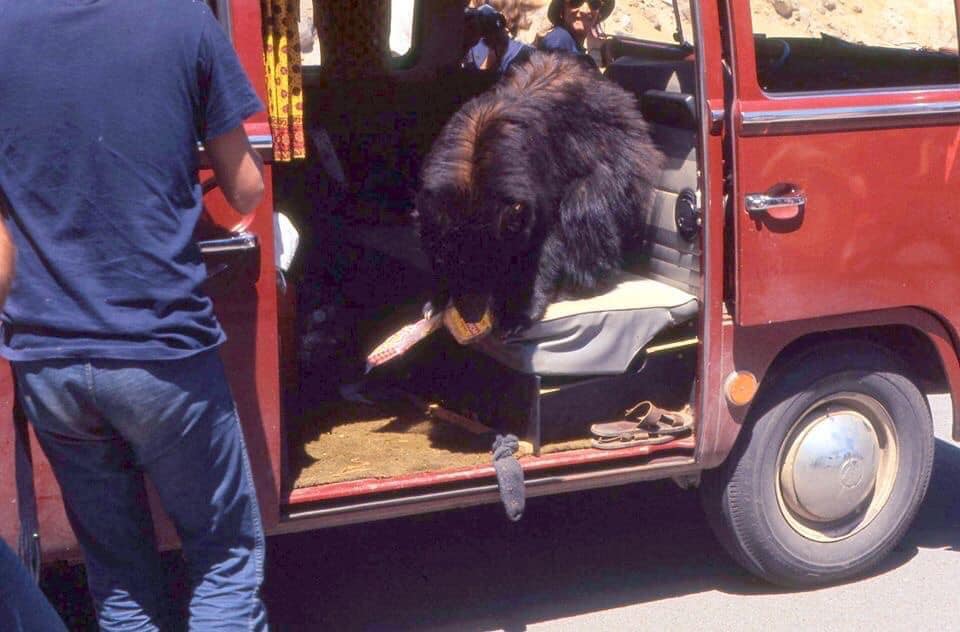
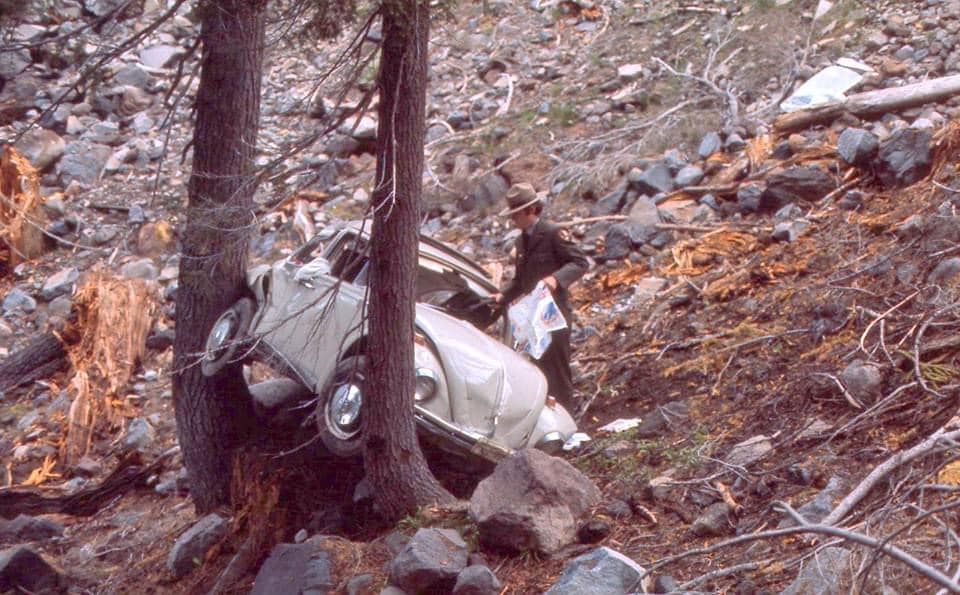

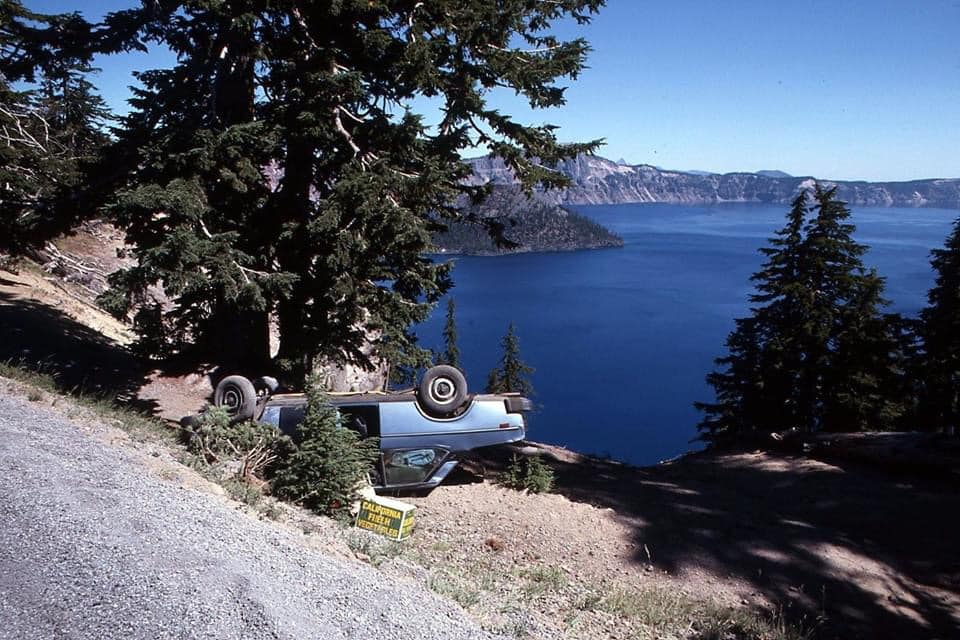
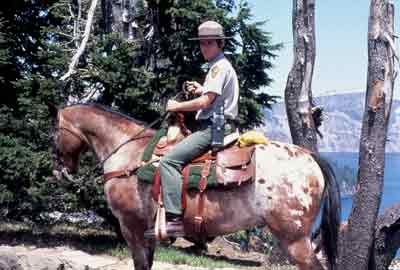

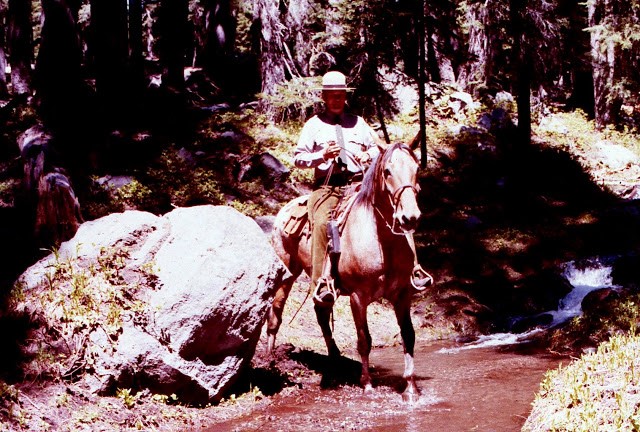
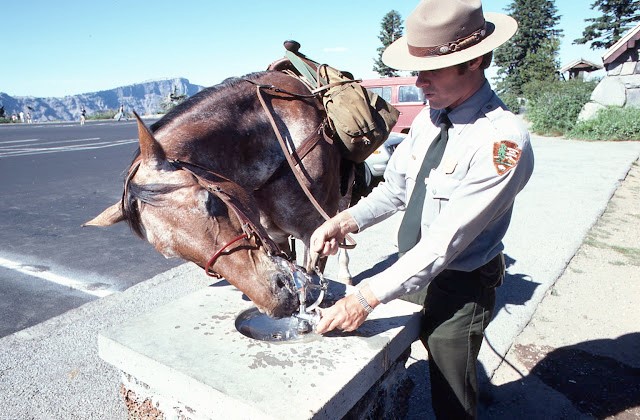

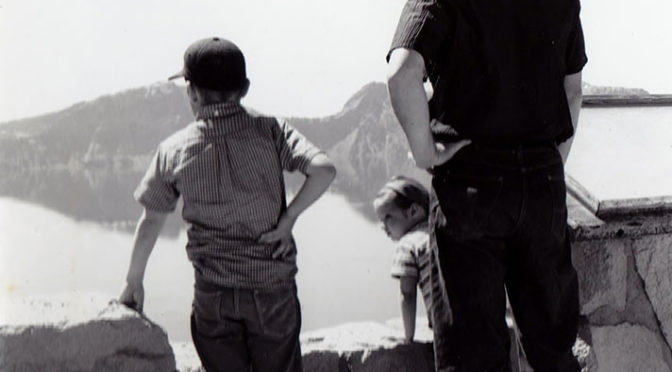
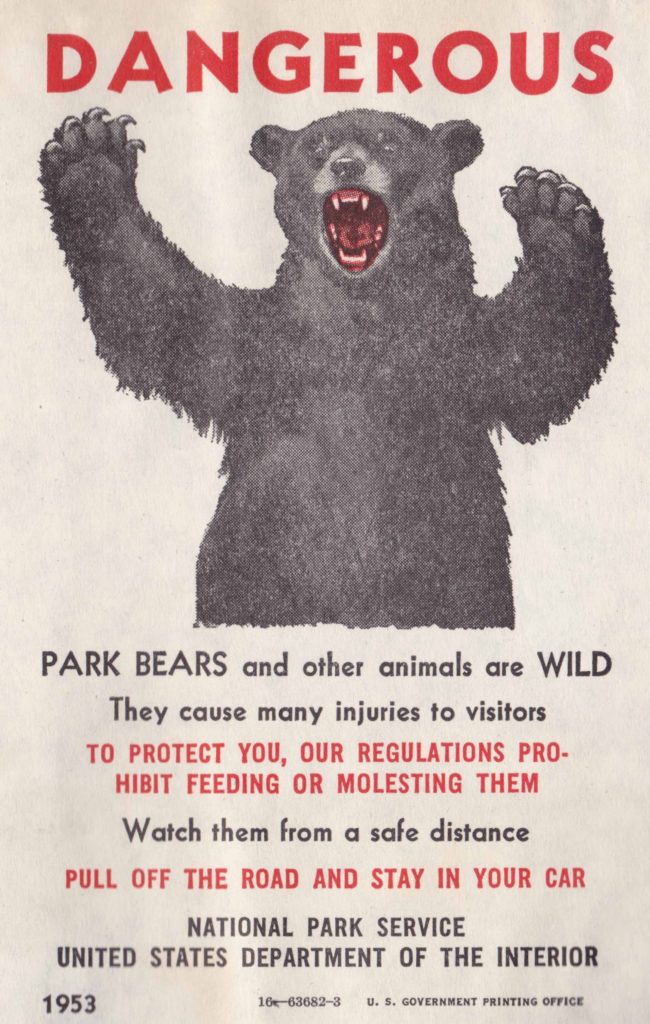
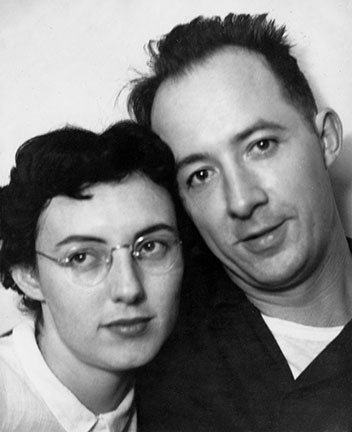
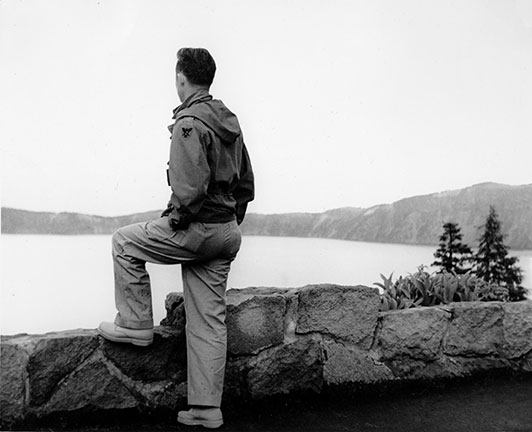
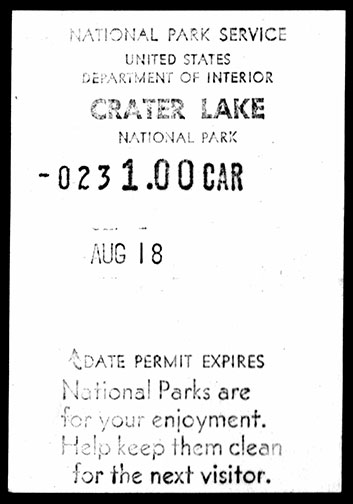
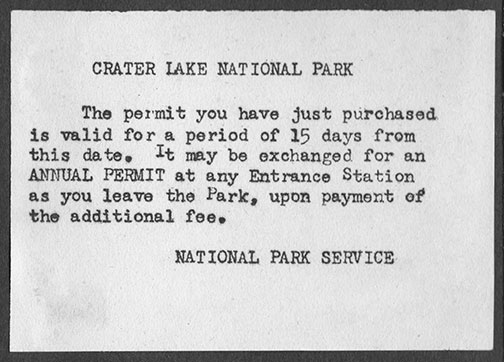
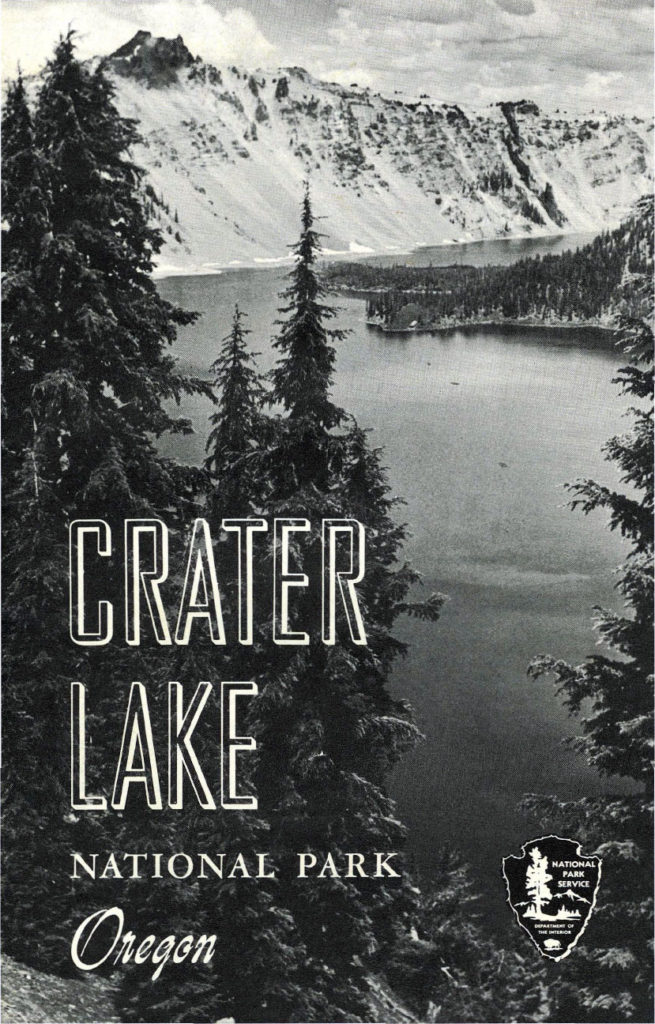
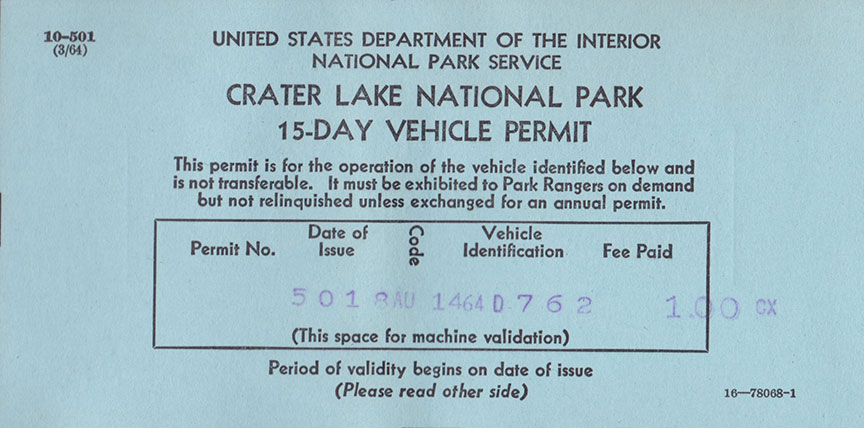
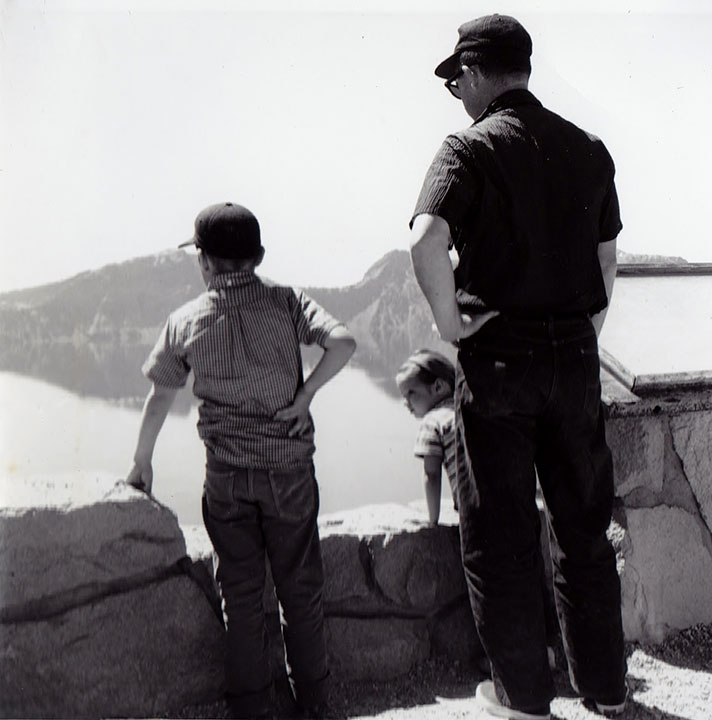
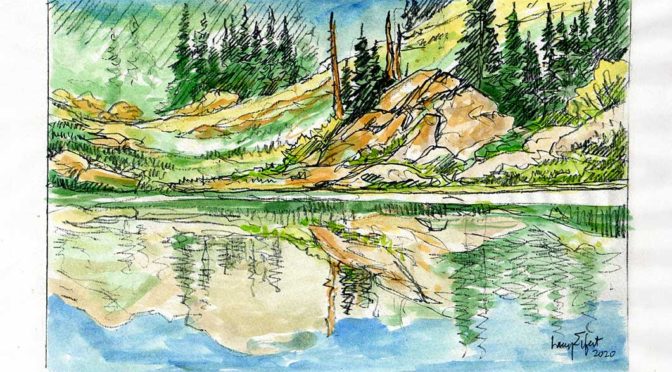








 At this campsite, an outcropping of boulders provided some really good reflections in the little lake, and so a painting was needed. Oh, I could have just turned the paper upside down and drawn it a second time, but that’s cheating, and not very accurate. Beside me while I drew, this Olympic chipmunk joined me. The Olympic Peninsula has several endemic mammals that live only here. This is one, and possibly my favorite. It’s small, even looks small with its short nose. This moment, with the chippy and me, my pencil and paper, are what makes my hiking complete – close connections with nature that will remain in my mind throughout the winter.
At this campsite, an outcropping of boulders provided some really good reflections in the little lake, and so a painting was needed. Oh, I could have just turned the paper upside down and drawn it a second time, but that’s cheating, and not very accurate. Beside me while I drew, this Olympic chipmunk joined me. The Olympic Peninsula has several endemic mammals that live only here. This is one, and possibly my favorite. It’s small, even looks small with its short nose. This moment, with the chippy and me, my pencil and paper, are what makes my hiking complete – close connections with nature that will remain in my mind throughout the winter.














